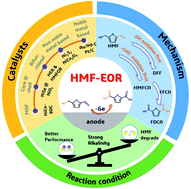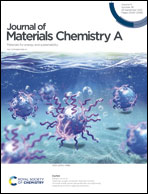Recent advances in the electrocatalytic synthesis of 2,5-furandicarboxylic acid from 5-(hydroxymethyl)furfural
Abstract
Biomass conversion and biorefineries provide a feasible and novel way to release the increasingly serious energy crisis and environmental deterioration. 2,5-furandicarboxylic acid (FDCA) has received increasing attention as a significant platform chemical that can potentially replace petroleum-derived terephthalate acid (TPA) and produce green polymers such as polyethylene-2,5-furandicarboxylate (PEF). In recent years, the blooming development of HMF electrochemical oxidation (HMF-EOR) has given a new birth to the traditional aerobic oxidation, which only needs non-noble metal-based electrocatalysts to convert HMF into FDCA under appropriate potential and ambient temperature. Cathodic H2 evolution reaction or biomass reduction reaction, coupled with anodic HMF oxidation, can also provide more value for HMF-EOR. In this review, most recently reported studies on the electrocatalytic synthesis of FDCA from HMF are introduced, including the structure and electrochemical performance of catalysts, reaction mechanism, optimization of the reaction conditions, and characterization methods. Electrocatalysts without noble metals are classified according to their composition, which has great effects on their catalytic activity. Furthermore, challenges and suggestions for HMF-EOR are provided in the end. It is anticipated that this review could promote scientists to develop effective electrocatalysts for the economical and environment-friendly synthesis of FDCA in industrial applications.



 Please wait while we load your content...
Please wait while we load your content...